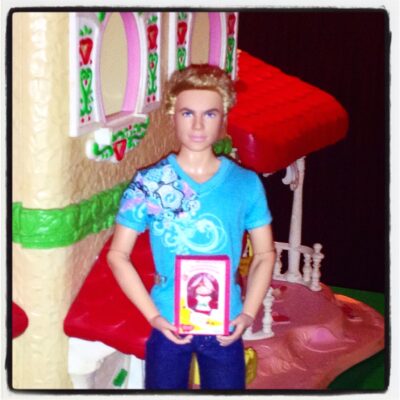Reviews
Collecting Outside the Box: Printed Miniatures
Collecting Outside the Box – Printed Miniatures By Jaye Andy Lehmann
The very title of this column belies any notion that I am the sort of collector who believes in keeping things in boxes and on cards. While a small sub-collection of my toys is stored and displayed in this way, I far prefer to take toys out of the package and play with them. My Barbie and Ken dolls are given alternate names and elaborate back stories, my Strawberry Shortcake dolls go on adventures, and my Star Trek action figures battle and “boldly go.” When you collect in this manner, dioramas and action scenes are a natural development.

One of my favourite ways to bring a toy display to life is to incorporate miniatures in the proper scale.
I am always on the lookout for anything that will work in a display. By far the easiest things to find are food items and fashion accessories, but you never know what you may come across in unexpected places. I once found a perfect replica of a 1960s fashion doll case in a display of Christmas ornaments.
If you need the perfect piece to bring a display together, sometimes it is easier and a lot less time-consuming to make your own. I have done a fair bit of this, with most of it being either sculpted (which will be the subject of a future article) or printed miniatures. “Print minis” are very popular, as you will discover with a quick Google search. Making your own printed miniatures is surprisingly easy with a few tools that most people already have – a scanner, a printer, and a camera or a decent smartphone..
Before getting started, you will want to consider the scale of your display. 1:12 scale is common for a lot of action figure lines, and miniature doll houses are often as small as 1:32. I work mostly in 1:6 scale, which is suitable for dolls like Barbie or the 12” GI Joe action figures. This may sound confusing, but all you have to do is measure the item you want to replicate in miniature and divide by six. For example, one real issue of a magazine would be equal to six miniatures in the 1:6 scale.


To get started, work with something flat and easy to scan, such as a greeting card. Import the scanned file into any program that will allow you to define its size in inches or centimetres, since that is how you will have measured the original. Resize the picture to 1/6 its original size, and it is ready to print. I like to use photo paper, which can often be found at dollar stores. Cut it out, fold as needed, and you have a greeting card for your doll or action figure. .
Once you have made sense of how to resize the image files, you will quickly develop ways to make three-dimensional miniatures. Try photographing all sides of something not easily scanned, such as the box from a board game. Using the same math to figure out scale, it is easy to create a template for a box of any size or shape. Simply glue the pictures to the appropriate sides. Once you have mastered this, you may want to try manipulating the pictures together in a computer program and printing it out as one image, ready to be folded into shape.

This may sound intimidating, but once you get started it all falls into place. I am by no means an expert on computer programs or photo editing. I use the simplest of programs available – Word, and Instagram – as well as basic tools like a ruler, a craft knife, and a glue stick, to produce my printed miniatures. Give it a try, and you will find that ideas come to you faster than you can produce them.
Written by Jaye Andy. You can find more great photos by Jaye on Instagram @jayeandy
Originally published in Punch 5


